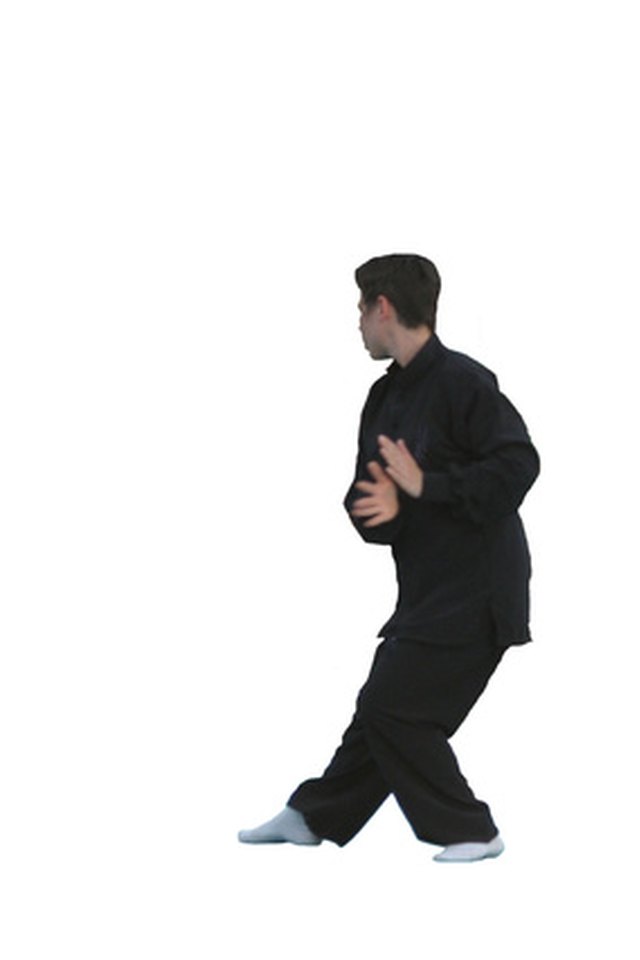Fighting Styles: List of Different Fighting Styles and Martial Arts (with Video!)

Almost every nation has its own ancient forms of martial arts. Most modern cultures have also imported fighting arts from other parts of the world and made them their own. Asian arts like Chinese martial arts, judo, and muay thai can now be found in most major cities of Europe and North America. South American martial art styles like Brazilian jiu-jitsu have become huge pillars of Mixed Martial Arts, or MMA, as well. Even lesser-known fighting techniques such as savate, French kickboxing, and Krav Maga, are now finding their footwork in the world.
What is Kung Fu?
The term "kung fu" refers to martial arts of Chinese origin. The 1,500-year-old Shaolin Temple in Henan province, China, gave birth to a famous branch of kung fu, Shaolin chuan fa. In the Shaolin Temple, instructors pair the fighting arts, which include stand up moves like blocks, kicks, punches, and other forms of hand-to-hand combat, with Zen meditation and personal development. Movie Stars like Bruce Lee and Jackie Chan helped popularize it with hit movies.
What is Karate?
"Karate" means "empty hand." Karate is a combat system that focuses on defense without weapons, though some karate styles are weapon-based. Karate practitioners brought Chinese techniques to Okinawa and developed them into a new art before spreading that art to the rest of Japan and the world. Karate uses both partner training and solo kata--choreographed fights against imaginary attackers--to develop fighting skill. It is also an olympic sport.
What is Jujitsu?
Jujitsu, or jujutsu, is a Japanese martial art developed as an adjunct to the weapons arts of the samurai. In its original form, it could best be described as combat grappling. If a samurai's sword was stripped from his hand in battle, he could fall back to a grappling fighting system: weapons disarms, joint breaks, ground fighting, clinch moves, chokes and elbow strikes. These grappling skills evolved into the modern art of jiu jitsu. Jiu Jitsu emphasizes takedowns over more traditional skills. Fighters in Brazil have helped to evolve the art as well into Brazilian Jiu-Jitsu, or BJJ, which has become a staple of the UFC.
What is Aikido?
Aikido dates back to 1942 and Morihei Ueshiba, a Japanese martial artist, drew on his background in jujitsu and his Shinto faith to develop aikido, the unifying energy way. Aikido is a hybrid martial art that combines a grappling art with philosophy. Aikido uses joint locks and throws to turn an attacker's force into a defense against that force.
What is Taekwondo?
Taekwondo, the unarmed Korean Martial art, means "foot, fist way." Taekwondo blends the indigenous Korean fighting art, taekkyon, with Japanese and Chinese influences. Taekwondo contains spectacular kicks and builds toughness into its practitioners, who smash boards and brick with their bare hands and feet. It also sees sparring in its many competitions.
What is Kalarippayattu?
Kalarippayattu, a fighting art of India, goes so far back into history that even its practitioners cannot fully trace its roots. Besides teaching self-defense, kalarippayattu contains a method for understanding the body and spirit and pulling from them their full potential. It bears similarities to yoga and has a strong Hindu component. Kalarippayattu practitioners have a whole-body flexibility and strength rarely seen in other full contact fighting arts.
What is Savate?
Savate, France's contribution to fighting styles, dates back to the Restoration in the 19th century, when savate practitioners fought bare-fisted duels in street fighting style competitions. Since then, it has developed into a complete fighting art with blocks, kicking techniques, and punches much like Asian arts but with more styles akin to combat sports. Savate fighters no longer fight duels but test their skills in kickboxing-style competitions.
References
- Wall Street Journal: Kung Fu Monks Don't Get a Kick Out of Fighting
- The Complete Martial Arts; Paul Crompton; 1989
- Fighting Arts: Jujutsu: The Evolving Art; Tom Ross & Christopher Caile
- Fighting Arts: Aikido in the Postwar Years: 1946-1956; Stanley Pranin
- Taekwondo: The Spirit of Korea; Chapter 2, The Historical Background of Taekwondo; Steven D. Capener; 2000
Resources
Writer Bio
Susan Peterson is the author of five books, including "Western Herbs for Martial Artists and Contact Athletes" and "Clare: A Novel." She holds a Ph.D. in text theory from the University of Texas at Arlington and is an avid cook and gardener.
